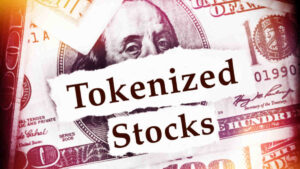Is Shapella the upgrade that proves Ethereum’s staying power?

Despite a lot of pre-fork concern, the move from Proof of Work to Proof of Stake appears to have been a positive re-birth for Ethereum. Pic via Getty Images.
After all the trepidation before ETH moved to Proof of Stake, Shapella looks like it has breathed new confidence into the coin.
We live in interesting times. Investor confidence in an asset can turn quickly as the economic winds change. This is especially true of digital assets, even those as large as BTC and ETH.
Which is why the Ethereum Shanghai + Capella (otherwise known as Shapella) upgrades are one of the most significant moments in recent blockchain development history.
Before the implementation of the Shapella upgrade, any ETH dedicated to staking remained locked within the Ethereum blockchain. The upgrade changed the Ethereum protocol, to allow this staked ETH to be unlocked for the first time.
To make it happen Ethereum went through (yet another) major planned hard fork to complete the transition from a ‘Proof of Work’ to a ‘Proof of Stake’ consensus mechanism.
There was a fair amount of investor concern about this operation, given the current ‘crypto winter’ market conditions. Would the ability to unstake and withdraw committed ETH create a mass exodus and drive its value down further?
The reality proved otherwise. Instead of seeing a sudden, terminal disengagement with the protocol, we instead saw users engage, as evidenced by the price of ETH rising around 11% in the immediate 24 hours following the change.
Educated guesses
Like all market analysts, we can only make educated guesses as to why this happened. Tim Ogilvie from Staked speculated (to his credit, before the upgrade took place) that the move to unstaking could see a massive movement of assets into Ethereum staking pools over time.
This is because a larger number of people would be happy to commit their cryptocurrency to staking if they know when and how they can undo that action.
Under this theory, the people that staked ETH before Shapella, were the early adopters (or true believers, to take a more positive spin) with an uncommonly high risk tolerance. Now that barrier has gone, it’s much more appealing to a wider audience.
For this to be true, it required there to be a larger audience of people who believed in the Ethereum chain’s value and mission to offer up their ETH for staking. After all, if you didn’t believe in future rewards, you would withdraw and never return. The market reaction in April is a strong sign that this is the case, and that even during a crypto bear market, a strong foundation of support remains.
What’s next for ETH?
For many, this will be seen as an obvious outcome. Ethereum is the second largest (by market capitalisation) and arguably largest (by number of users & developers) blockchain in the world.
Many of the world’s leading web3 projects and the NFT community are built on Ethereum. But for those who are more casual observers of the blockchain community, events like the crypto winter are still concerning.
Watching Ethereum take the Shapella update in its stride is a big proof point towards its long-term success.
What happens from here is, as always, unclear.For Ethereum itself, the next step is to begin lowering the transaction costs for layer-2 transaction chains in its upcoming ‘danksharding’ update later this year.
For investors, only one thing is for certain: we can expect volatility in the coming months as investors adjust to the new landscape.
This article was developed in collaboration with Kraken Australia, a Stockhead advertiser at the time of publishing.
This article does not constitute financial product advice. You should consider obtaining independent advice before making any financial decisions.
Related Topics
UNLOCK INSIGHTS
Discover the untold stories of emerging ASX stocks.
Daily news and expert analysis, it's free to subscribe.
By proceeding, you confirm you understand that we handle personal information in accordance with our Privacy Policy.








